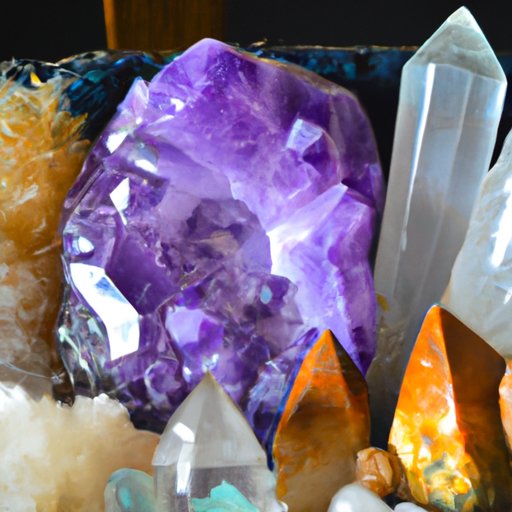Introduction
Crystals have long been associated with spirituality, healing, and mysticism. But what is the science behind these beautiful, mysterious objects? This article will explore the science behind crystals, looking at how they are formed, their role in technology, and their healing properties. We will also examine the different types of crystals and how they can be used.
Exploring the Science Behind Crystals
Crystals are solid substances that contain atoms and molecules that form a regular, repeating pattern. They are made up of minerals, which are composed of elements such as carbon, oxygen, and silicon. These elements are arranged in an orderly structure, giving the crystal its unique shape and properties. The exact arrangement of the atoms and molecules determines the type of crystal it is and its properties.
Crystals have a variety of uses in technology. They are used in electronics, such as in radios and televisions, to control the flow of electric current. They are also used in lasers and optical communication systems. In addition, crystals are used in watches and other instruments to keep accurate time.

The Healing Properties of Crystals
Crystal therapy, also known as crystal healing, is a form of alternative medicine that involves the use of crystals for healing purposes. Proponents of this practice believe that each type of crystal has its own unique energy that can be used to help bring balance and harmony to the body, mind, and spirit. While there is no scientific evidence to support this belief, many people still find comfort and relief from the use of crystals.
The use of crystals can be traced back to ancient civilizations, such as the Egyptians, Greeks, and Chinese. These cultures believed that crystals could be used to heal physical ailments and spiritual distress. For example, the Chinese believed that jade, a type of crystal, had a calming effect on the body and was used to treat kidney diseases.

Exploring the Different Types of Crystals and Their Uses
There are many different types of crystals, each with its own unique properties. Some of the most common crystals include quartz, amethyst, tourmaline, and citrine. Each of these crystals has its own specific uses and benefits.
Quartz is one of the most widely used crystals. It is often used to amplify energy and focus the mind. It can also be used to help with meditation and relaxation. Amethyst is another popular crystal that is believed to have calming and healing properties. It is often used to reduce stress and anxiety.
Tourmaline is a powerful stone that can be used to draw out negative energy. It is also believed to promote mental clarity and emotional balance. Citrine is a yellow-colored crystal that is believed to bring good luck and abundance. It is often used to attract wealth and success.
Conclusion
In conclusion, we have explored the science behind crystals, looking at how they are formed, their role in technology, and their healing properties. We have also examined the different types of crystals and how they can be used. While there is no scientific evidence to support the belief that crystals have healing properties, many people still find comfort and relief from the use of crystals.
Crystals have been used for thousands of years and continue to be popular today. Whether you believe in their healing properties or not, crystals are fascinating objects that are sure to spark your curiosity.
(Note: Is this article not meeting your expectations? Do you have knowledge or insights to share? Unlock new opportunities and expand your reach by joining our authors team. Click Registration to join us and share your expertise with our readers.)
